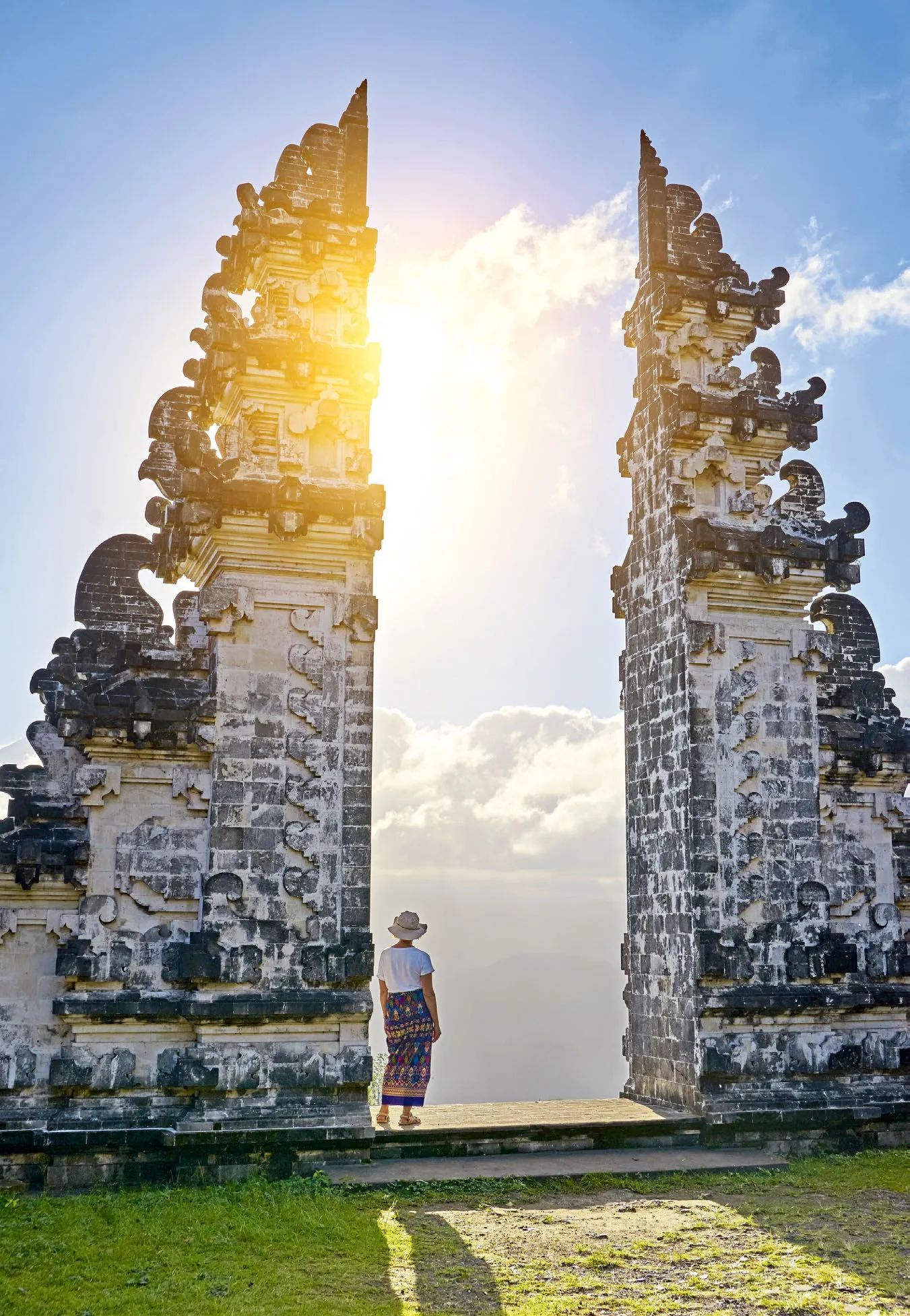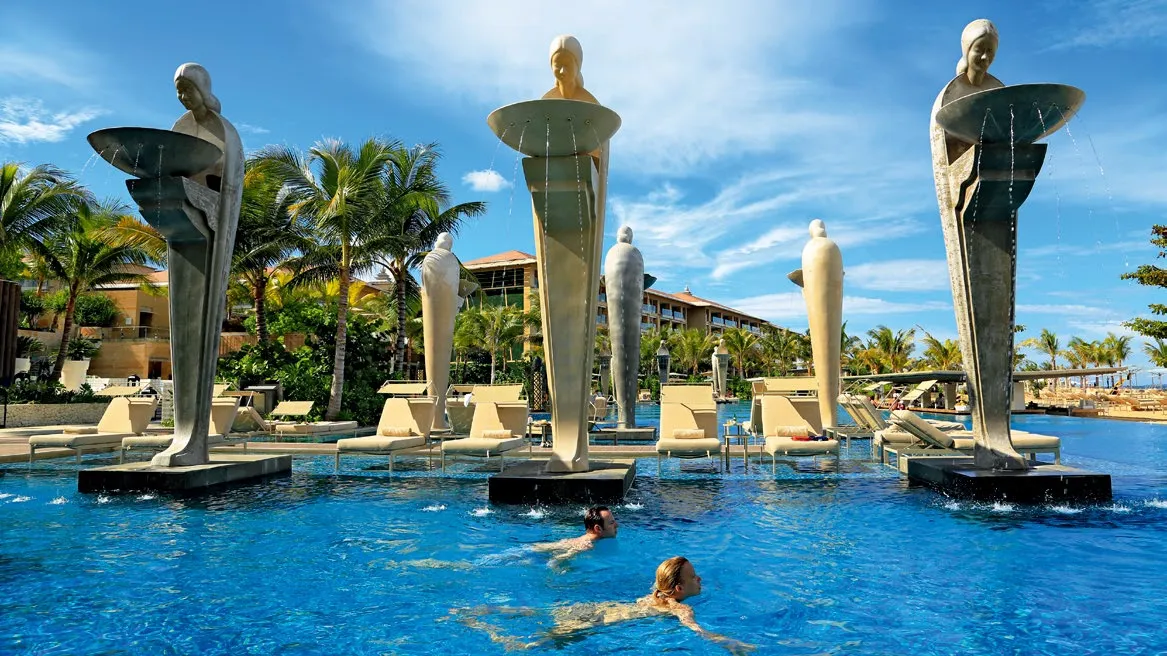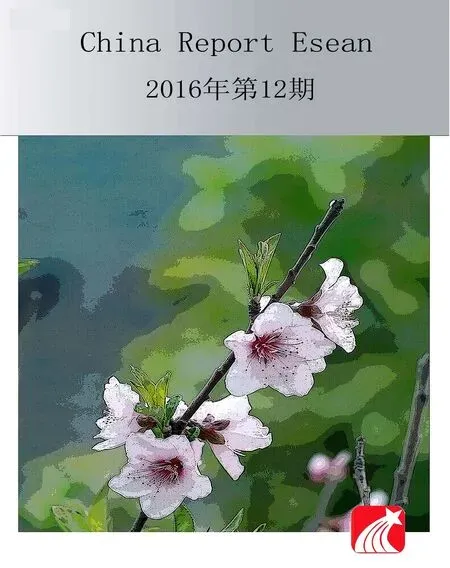Tourism Set to Drive Indonesia’s Economy Forward
By Yessica Sie
Tourism Set to Drive Indonesia’s Economy Forward
By Yessica Sie

Gate to Pura Penataran Lempuyang Temple, Bali, Indonesia.
About the author:Yessica Sie is a graphic designer withInterni, a contemporary design magazine. Sie is from Jakarta, Indonesia’s capital.
Tourism has been showing signs of being Indonesia’s economic centerpiece as 2016 comes to an end. Winning 12 out of 16 categories in the World Halal Tourism Awards 2016 in Abu Dhabi, UAE, it is Indonesia’s second such near-sweep of the awards in two consecutive years, beating Malaysia and Turkey, the two most legendary halal tourism destinations.The win is hoped to boost the country’s confidence, credibility and calibration with tourism’s global standards.
In China, the national tourism campaign “Wonderful Indonesia” won an award fromChina Travel and Leisuremagazine, hailing Indonesia as The Famous Next Travel Destination at the 10th Anniversary of the China Travel and Leisure Awards in Shanghai on Nov. 15, 2016. AsChina Travel and Leisureis a reputable independent magazine with a long history of worldwide travel reporting, being granted such award is deeply meaningful to Indonesia’s tourism promotion to the Chinese market.
China’s outbound travelers surpassed 120 million in 2015, departing to Europe, North America and Southeast Asia, especially Thailand where the number of Chinese tourists reached 8 million, while those who travel to Indonesia were a mere 1.2 million, a minute 1 percent of China’s total outbound travelers.
At the fourth annual National Coordination Meeting in Jakarta, themed “Indonesia Incorporated”, the government announced that food, energy, seafaring, industrial and special economic zones and tourism will be the prioritized sectors of development in 2017. The selection of these five sectors was based on their significance to the country’s development, and tourism is seen as the leading sector thanks to its positive growth trends in short-term, mid-term and long-term development. Focusing on tourism, provincial and national level officials and business organizations talked through several topics on the agenda, including digital tourism, homestays and airline connectivity.
Development Plans
The Ministry of Tourism specified their development plans for the next five years as an endeavor to increase tourist arrivals, targeting 15 million foreign and 265 million local tourists in 2017, compared to the 2016 target of 12 million and 250 million, respectively. By October 2016, the number of foreign tourists having entered the country in 2016 reached 9.4 million, nearing the 12 million target. Though the country is a vast archipelago, its inbound tourists account for less than half those found in neighboring countries such as Malaysia and Thailand. Indonesia’s largest source of inbound tourists over the past few years has been Singapore, followed by Malaysia, Australia and China.
On the micro level, the ministry is determined to hoist Indonesia’s position on the World Economic Forum’s Travel and Tourism Competitiveness (WTTC) index ranking to number 40 in 2017 and number 30 by 2019 — pushing upwards from the 2015 index ranking of number 50. Singapore leads the region at number 11, China ranks number 17,Malaysia number 25, Thailand number 35, the Philippines number 74, Vietnam number 75, Laos number 96, Cambodia number 105 and Myanmar number 134 (four non-ASEAN countries and Brunei Darussalam were not covered in the report due to insuf ficient data).
Indonesian Minister of Tourism Arief Yahya stated that the success of tourism development plans in the country will be inseparable from the synergy between the five key elements of tourism: the academics, the business players, the community, the government and the media.

Left: Buddhist Temple Borobudur at Sunrise in Yogyakarta, Indonesia.

Right: Inside a resort in Bali, Indonesia.
Reaching growth of 30 percent in five years, tourism is currently the fourth largest creator of job opportunities in the country.
Large Contribution to GDP
There are several reasons why it is only logical for Indonesia to pinpoint tourism and go all out with it. First of all, according the UNWTO and WTTC 2015, tourism contributes 9.8 percent of global GDP, while in Indonesia, tourism has already contributed 11 percent of national GDP, the highest percentage in ASEAN, and is still growing by between 4.8 percent and 6.9 percent per year, much higher than GDP growth in the sectors of agriculture, automotive manufacturing and mining.
Secondly, tourism plays a vital role in generating foreign exchange. Every US$1 million invested in tourism generates US$1.7 million of GDP. Indonesian Minister of National Development Planning Bambang Brodjonegoro said that with such a high rate of return, tourism has not only the largest, but also the most concrete multiplier effect on society.
Third, tourism creates an abundant number of job opportunities (one in every 11 jobs is related to the tourism industry) for a considerably low cost, at US$5,000 per job, compared to the industry average of US$100,000 per job. Reaching growth of 30 percent in five years, tourism is currently the fourth largest creator of job opportunities in the country. It is expected that the tourism industry will be able to provide 12 million jobs in 2017. Compared to other sectors, it is also said that tourism is easily pro-job, pro-poverty alleviation, progrowth and pro-environment.
In regard to facilities, 2017 will also see the construction of 100,000 homestay accommodations in 10 prioritized travel destinations: Lake Toba in North Sumatera, Tanjung Kelayang in Bangka Belitung, Tanjung Lesung in Banten, Kepulauan Seribu in the Special Capital Region of Jakarta, Borobudur Temple in Central Java, Bromo Tengger Semeru in East Java, Mandalika in West Nusa Tenggara, Labuan Bajo in East Nusa Tenggara, Wakatobi in Southeast Sulawesi and Morotai in Maluku. Hospitality and the food service sector are the main pillars of travel destinations. Chairman of the Indonesian Hotel and Restaurant Association Haryadi Sukamdani expressed hopes that the Ministry of Tourism will press on at full speed in livening up the country’s tourism products such as cultural events.
All these efforts go hand-in-hand with accessibility. Attempts to support this ambitious goal include increases in airport slots allocation, ensuring a sufficient air service agreement, as well as increasing both scheduled and chartered direct flights from potential markets of not only Southeast Asian countries and China, but also Europe and the Middle East. This year, Indonesian carrier Lion Air opened a direct route between Manado, the capital of North Sulawesi, and eight major Chinese cities and regions, and its budget airline unit Batik Air plans to open new routes to Chennai, Kolkata and Mumbai in India, Perth in Australia, Kuala Lumpur of Malaysia and Shenzhen and Guangzhou in China. Meanwhile, Garuda Indonesia, the country’s flagship carrier, launched flights to Mumbai via Bangkok three times a week, and Air Asia Indonesia is to open new routes to Japan and India.
Tourism is the easiest and least expensive, yet pivotal contributing factor to national GDP, foreign exchange earnings and job opportunities. Moreover, tourism is the only industry that shows a worldwide positive trend of foreign exchange earnings despite the weakening global economy. The prospects look bright —hype and optimism are taking shape due to the great performance the tourism industry has shown in the past few years, and there is plenty of room for improvement.
- China Report Asean的其它文章
- Should We Stay or Should We Go? What multinationals should look for as they decide to keep production in China or move it to ASEAN countries
- Brunei Envoy Pays Tribute To the King of Boni
- Lost in Vietnam: A Co-Production Love Comedy
- Cycling in Hainan A New Avenue For Tourism
- Bambang Susantono: Infrastructure Development Requires Efforts From All Sides
- Singapore and China: Building on the Past and Opening a Way Toward the Future Exclusive interview with Singaporean Ambassador to China Stanley Loh

